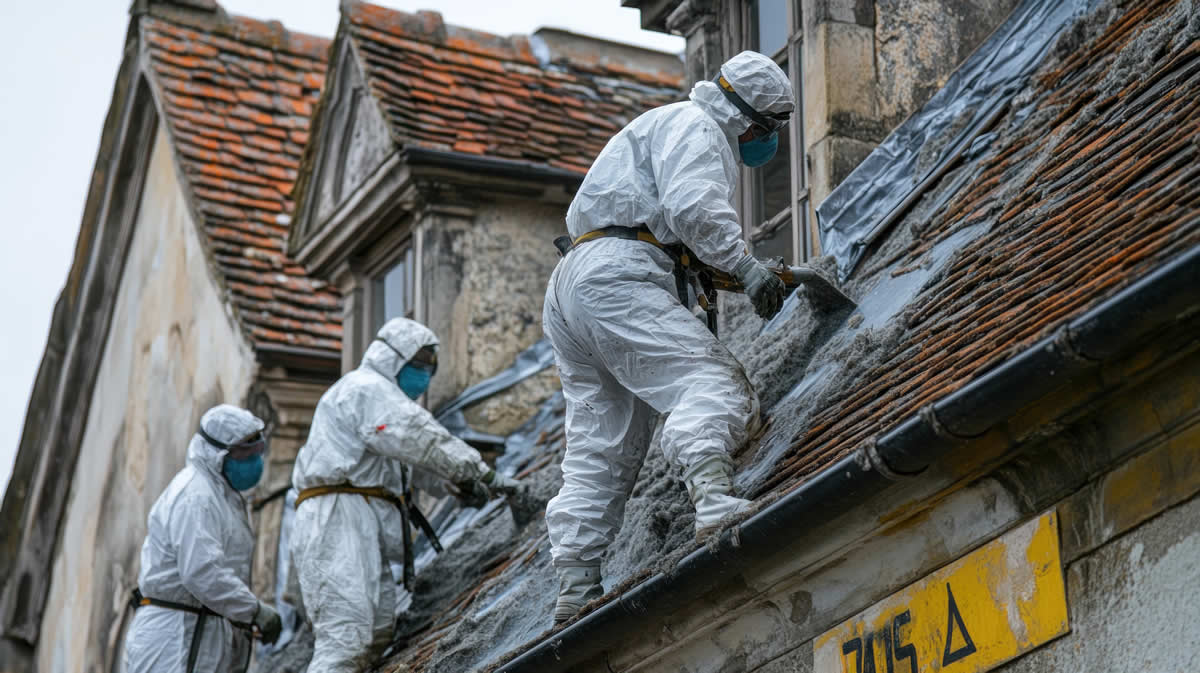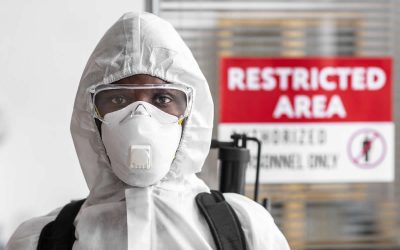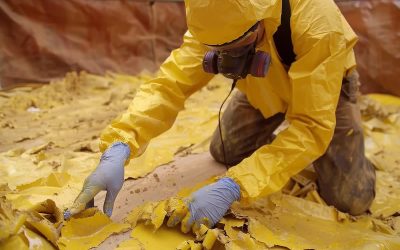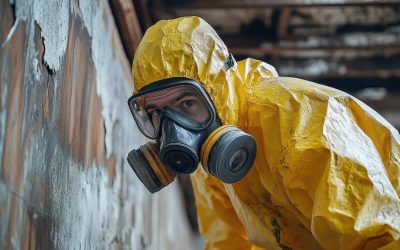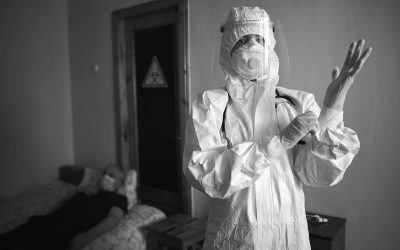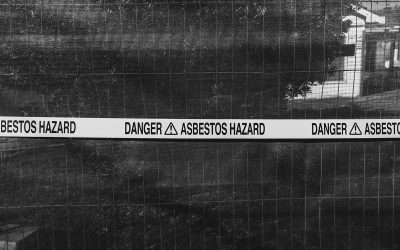You stand in a cold loft. A strip light hums above. A plank creaks under your foot. You reach for an old box and see grey powder scatter across the board. Your mind races. Is that normal dust—or is it asbestos? You want a firm answer, yet every guide you read says the fibres are too small to see.
That claim feels at odds with the powder you can hold in your palm. In this post you and I will untangle what people mean when they say “asbestos dust.” We will explore how it forms, how it behaves in the air, what clues your eyes can trust, and when you must move from guesswork to lab testing.
We will keep each thought close to the next so you can follow the thread without strain. By the end you will see why the most dangerous dust often hides in plain sight.
A quick primer on asbestos dust
Asbestos fibre starts its life locked in rock seams. Miners break the seams, mills crush the rock, and factories spin the fibres into products—old roof sheets, pipe lagging, floor tiles, wall boards, sprayed coatings. When any of those products crack, saw, or grind, the fibre bundles split apart. Each bundle splits again into finer strands. The end fragments measure two to ten microns across, far thinner than a human hair. That is asbestos dust.
Those fragments weigh almost nothing, so they float on tiny rises of air. Once breathed in, they can lodge deep in lung tissue. That risk is why you care about seeing or not seeing the dust. If you can spot it early, you can act before you inhale it. The hard truth: you cannot rely on sight alone, yet some visual signs can trigger caution.
Dust you can see, fibres you cannot
Hold a torch at an angle in a dark room. You see specks drifting in the beam. Most of those specks are skin flakes, lint, soil grains, and fluff. They measure far above the asbestos danger zone. They fall quickly. They look like normal dust. Asbestos fibres, by contrast, do not show as floating specks. They travel with the other dust but stay invisible.
So when you stare at a patch of settled dust on a board, you face two layers. The top layer is coarse and visible. The lower layer hides finer particles, including any asbestos. That mix means you cannot point to the powder and say, “I see asbestos.” You can only note where the dust sits and what material lies under it.
Materials that raise a red flag
Visual caution starts with context. You first ask: what broke apart to make this dust? If the dust came from one of these materials, you treat the scene as suspect:
- Corrugated asbestos-cement roof sheets, often grey with shallow grooves.
- Insulation board behind old heaters or above ceiling tiles.
- Sprayed fireproofing that forms a rough, loose coating on steel beams.
These three groups account for most domestic asbestos calls. They differ in hardness, yet all shed dust when drilled, sawn, or weathered. If you see a pile of grey grit under a cracked corrugated sheet, the dust may carry asbestos even if you cannot pick out fibres.
Colour and texture: shaky guides
People sometimes claim asbestos dust looks blue, brown, or white to match fibre types. In truth, colour comes from binders and dirt. A smashed white-cement tile leaves pale debris; a damp brown board leaves dark sludge. None of that proves the presence or absence of asbestos. Texture also misleads. A fine flour-like dust can come from gypsum plaster; a gritty sand-like dust can come from concrete. One rule stands firm: any dust that rises from a known asbestos product likely contains fibres, whatever colour it shows.
Powder trails and flake patterns
Certain broken products leave tell-tale trails. Asbestos-cement roofs often chip along bolt holes. The chips fall, hit the floor, and burst into radial flakes—thin shards that look like broken slate. Insulation board, when drilled, leaves a ring of soft powder clinging to the drill bit. Sprayed coatings drop fluffy balls that collapse under a finger. These patterns are not proof, yet they build a stronger suspicion list. When two or three signs stack up—old date, suspect material, distinct break pattern—you should halt work and test.
Light tricks in the air
In a shaft of sunlight you may notice a faint haze, like cigarette smoke, after you tap a brittle board. That haze is not the fibres themselves; it is the larger dust stirred up with them. The fibres ride the same thermal lifts. If you see the haze linger longer than normal household dust, it hints at very light particles—potentially asbestos. Again the hint alone cannot confirm, but it warns you to stop and clear out until sampling.
Smell and sound—false friends
Some websites claim you can “smell” asbestos. You cannot. Any odour you notice comes from glue, paint, or damp. Others say you can “hear” asbestos cement when you tap it—supposedly a dull ring. Tap tests vary with thickness and fixings, so they mislead more than help. Sight gives you better odds than smell or sound, but only in context.
A step-by-step field check
You find dust. You run through a short chain of questions:
- Age: did builders install this board, tile, or sheet before 2000?
- Type: does it match known asbestos products—cement, insulation board, spray?
- Damage: do you see cracks, drill holes, or broken edges that could release fibres?
- Spread: is dust only at one spot or fanned out over a wide area?
- Activity: did recent sanding, drilling, or weather create fresh debris?
If two or more answers raise concern, your next move is testing, not guessing.
How professionals view dust
Licensed surveyors do not rely on the naked eye. They draw samples into clear bags, seal them, and label location, material, and damage notes. In the lab analysts mount the dust on slides, treat it with refractive liquids, and look under polarised light microscopy. They count fibres and judge type by colour shift and shape. You cannot replicate that with a magnifier at home. Your best defence is early suspicion plus safe distance.
Camera and torch tricks you can use
While you cannot see fibres, you can document dust for an expert. Set your phone to macro mode. Place a torch flat on the surface so light skims across. Take photos of the dust field, broken edges, and context. Bright, raking light highlights tiny ridges and flakes that point to crumbling asbestos-cement. Clear images help surveyors judge urgency before they arrive.
Why “invisible” still matters
Many people relax the moment they see no clouds in the air. Yet asbestos risk often peaks after fibres settle. You sweep, wipe, or vacuum; you stir the layer; fibres lift again. Even after a year, a forgotten loft board can send fibres flying when you move a suitcase. Therefore your eye test—I see nothing—should never override material history.
Cleaning traps to avoid
Normal vacuum cleaners push warm air through coarse filters. Fine fibres shoot straight out the exhaust. Sweeping with a dry brush flicks particles into sunlight beams. The only safe gear is a class H vacuum with HEPA filter, plus damp rags you seal as waste. If you do not own that gear, step away and block the room until a contractor visits.
A short set of safe habits
- Seal the zone before you probe a dusty, suspect space. Close doors, tape vents.
- Mist the air with light water spray if you must place sampling kits.
- Wear an FFP3 mask and disposable coveralls for any direct contact.
Three habits—simple, direct—keep fibres off clothes and out of lungs while you wait for lab confirmation.
From dust to diagnosis: timeline
Day one: you notice dust on a cracked garage roof panel. Day two: a surveyor takes samples. Day five: the lab report flags chrysotile at two percent by weight. Day six: you seal the panel with specialist paint as a temporary fix and plan removal. This quick chain beats six months of worry and repeated exposure. Speed hinges on that first visual suspicion.
Psychological angle—seeing what you fear
Sometimes you worry so much you see asbestos everywhere. Other times you shrug off real risk. The brain swings between false positives and false negatives. A calm checklist helps. Stick to the age-type-damage-spread-activity chain. When in doubt, choose caution over convenience.
Final picture
So, what does asbestos dust look like? You rarely see the harm itself. You see clues: grey chips under a vintage sheet, fluffy balls under a sprayed beam, a stubborn haze in a sunlit loft after a drill hole. You watch patterns, note context, and let those signs drive a test, not a guess. Your eyesight, backed by quick logic, buys time. The lab then gives truth. That partnership keeps lungs clear.
Next time you sweep a beam of torchlight over a floor and catch a glimmer of fine powder, stop. Ask the five questions. If caution wins, seal the space, call a surveyor, and breathe easy knowing you chose the safe path. That choice, repeated each time dust appears, protects you, your family, and anyone who works on your property for years to come.
Are you looking for Asbestos Disposal in Oxfordshire? If so, contact us now!
Asbestos Removal Leyton – Asbestos Removal Finchley – Asbestos Removal Upper Sydenham
